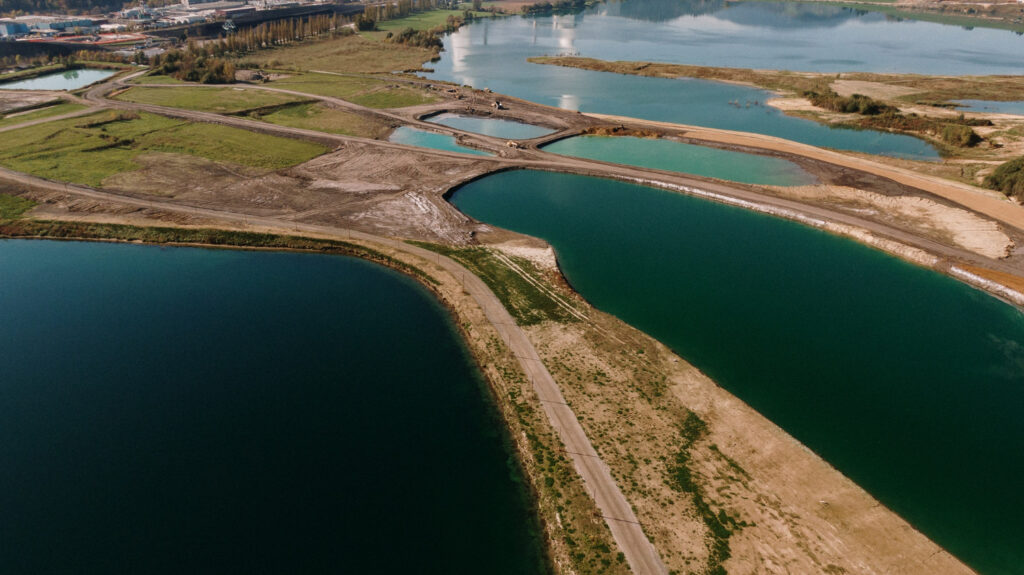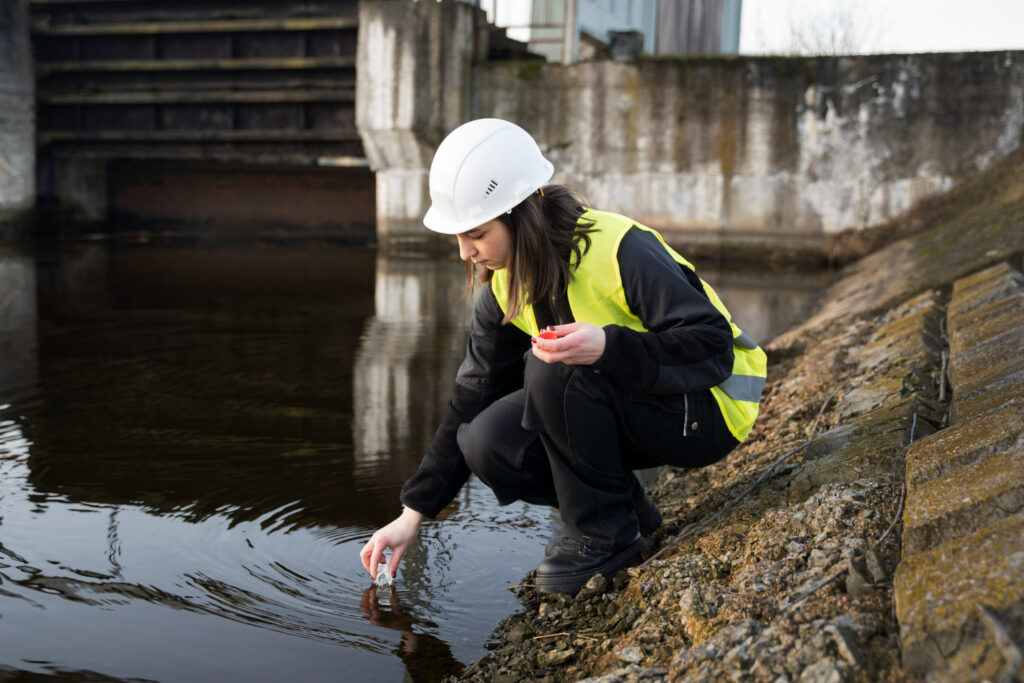Revolutionizing the Water Sector: The Impact of Digital Transformation
Embracing Digital Innovations in the Water Sector
The adoption of digital innovations in the water sector is not just a trend; it’s a fundamental shift in how water resources are managed and conserved. This shift is driven by the integration of advanced technologies like the Internet of Things (IoT), Artificial Intelligence (AI), and big data analytics, which collectively contribute to a more efficient, responsive, and sustainable water management system.Internet of Things (IoT): A Network of Possibilities
IoT technology in the water sector involves a network of sensors and devices connected to the internet, which collect and transmit data in real-time. This technology offers several benefits:- Real-Time Monitoring and Control: IoT sensors placed throughout the water distribution system can monitor flow rates, pressure, and water quality. This data helps in detecting leaks, managing water pressure, and ensuring the water’s safety for consumption.
- Remote Management: With IoT, water utility operators can remotely monitor and control water systems. This capability is crucial for managing water supply in remote or inaccessible areas, reducing the need for onsite visits.
Artificial Intelligence (AI) and Machine Learning: Smarter Water Management
AI and machine learning algorithms are revolutionizing how we analyze and interpret data in the water sector:- Predictive Maintenance: AI can predict potential system failures or maintenance needs before they occur. This proactive approach saves time and resources and minimizes disruptions in water supply.
- Optimization of Water Treatment Processes: AI algorithms can optimize water treatment processes by analyzing data on water quality, temperature, and other relevant factors, leading to more efficient and cost-effective operations.
- Demand Forecasting: AI can accurately forecast water demand based on historical data, weather patterns, and consumer behavior. This helps in better planning and resource allocation.
Big Data Analytics: Turning Data into Insights
The water sector generates vast amounts of data from various sources. Big data analytics plays a pivotal role in transforming this data into actionable insights:- Enhanced Decision Making: By analyzing trends and patterns in water usage and distribution, utilities can make informed decisions about infrastructure investments and conservation strategies.
- Consumer Behavior Analysis: Utilities can use data analytics to understand consumer water usage patterns, which can inform targeted conservation campaigns and customer engagement strategies.
- Environmental Impact Assessment: Big data can be used to assess the environmental impact of water management practices, aiding in the development of more sustainable approaches.
Integrating Digital Innovations: The Road Ahead
The integration of these technologies represents a significant step forward in the water sector. However, successful implementation requires strategic planning, investment in infrastructure, and upskilling of the workforce. As we continue to embrace these digital innovations, the water sector stands on the brink of a more efficient, sustainable, and resilient future.Sustainable Water Management: Harnessing Digital Technologies
In the era of digital transformation, sustainable water management has become more achievable and efficient. The integration of digital technologies is enabling smarter, more responsible stewardship of water resources, leading to significant environmental, economic, and social benefits.Smart Metering: The Gateway to Water Efficiency
Smart metering is at the forefront of sustainable water management. These advanced meters provide real-time data on water usage, helping both utilities and consumers to:- Monitor Consumption: Consumers can track their water usage more accurately, promoting awareness and encouraging conservation.
- Identify Leaks: Early detection of leaks through continuous monitoring can prevent significant water loss.
- Optimize Billing: Smart meters ensure more accurate billing, based on actual usage rather than estimates.
Data-Driven Water Distribution
Digital technologies enable more efficient water distribution systems, which is critical in regions facing water scarcity:- Demand-Responsive Distribution: By analyzing usage patterns, water utilities can adjust distribution to align with demand, reducing waste.
- Pressure Management: Automated systems can adjust water pressure in the distribution network, minimizing leakages and pipe bursts.
Water Quality Monitoring and Management
Digital transformation has made significant strides in water quality monitoring:- Real-Time Quality Analysis: Sensors can continuously monitor water quality parameters like pH, turbidity, and contaminants, ensuring safety and compliance with regulations.
- Pollution Source Tracking: Digital tools can help in pinpointing the sources of pollution, aiding in quicker response and remediation efforts.
Sustainable Wastewater Treatment
Innovations in digital technology also extend to wastewater treatment:- Process Optimization: AI and machine learning can optimize treatment processes, reducing energy consumption and improving efficiency.
- Resource Recovery: Advanced data analytics can identify opportunities for resource recovery from wastewater, such as energy generation or nutrient extraction.
Challenges and Strategies for Implementation
While the potential of digital technologies in sustainable water management is vast, challenges such as funding, infrastructure readiness, and data security remain. Strategies to overcome these challenges include:- Public-Private Partnerships: Collaborations between governments and technology companies can facilitate investment and knowledge sharing.
- Capacity Building: Training and development programs are essential to equip the workforce with the necessary skills.
- Policy Frameworks: Effective policy frameworks can provide guidance and support for the implementation of digital technologies in water management.
Navigating the Challenges of Digital Transformation in Water Management
Technical and Financial Barriers
One of the most significant challenges in implementing digital transformation in the water sector is the technical and financial barrier. Many water utilities, especially in developing countries, face budget constraints that make it difficult to invest in advanced technologies like IoT, AI, and big data analytics. Moreover, the existing infrastructure in many areas may not be compatible with these new technologies, necessitating costly upgrades.Skill Gap and Workforce Training
Another challenge is the skill gap in the workforce. The successful deployment of digital solutions requires a workforce that is not only skilled in traditional water management practices but also proficient in new digital technologies. This necessitates comprehensive training and education programs, which can be resource-intensive to develop and implement.Opportunities Presented by Digital Transformation

Enhanced Efficiency and Resource Management
Despite these challenges, the opportunities presented by digital transformation in the water sector are immense. Digital technologies can significantly enhance the efficiency of water management systems. For instance, AI and machine learning can optimize water treatment and distribution, leading to significant reductions in energy and water wastage. This not only conserves resources but also lowers operational costs in the long run.Improved Service and Environmental Protection
Digital transformation also offers the opportunity to improve service delivery and environmental protection. Real-time monitoring and data analytics can lead to more informed decision-making, allowing for quicker responses to issues such as leaks, contamination, or changes in water demand. Additionally, these technologies can play a crucial role in protecting water sources from pollution and ensuring sustainable water use, which is increasingly important in the face of climate change and growing populations.Conclusion
In conclusion, the digital transformation of the water sector stands as a pivotal development in our ongoing quest for sustainability and efficiency in resource management. While it presents significant challenges, including technical and financial barriers, as well as a need for workforce upskilling, the potential benefits are profound. These innovations offer enhanced efficiency, improved service delivery, and a greater ability to protect and sustain our vital water resources. Embracing these technologies and overcoming the associated challenges will be crucial for ensuring a resilient and sustainable water future, benefitting societies and ecosystems alike.Frequently Asked Questions
The primary benefits include enhanced operational efficiency, improved water quality monitoring, and more effective resource management. Digital technologies like IoT, AI, and big data analytics allow for real-time data collection and analysis, leading to better decision-making, reduced waste, and optimized water distribution. These advancements also contribute to more sustainable water management practices and can aid in addressing challenges related to water scarcity and climate change impacts.
Digital transformation helps reduce water wastage through advanced monitoring and leak detection systems. IoT sensors and smart meters can detect leaks and irregularities in real-time, allowing for immediate repairs and reducing the amount of water lost through the distribution system. Additionally, AI-driven predictive maintenance can forecast potential system failures, further minimizing the risk of leaks and water loss.
The key challenges include the high initial investment costs for technology implementation, the need to upgrade existing water infrastructure to integrate new technologies, and the skill gap in the current workforce. Overcoming these challenges requires strategic investment, training and capacity building for water sector professionals, and the development of robust policy frameworks that support the adoption of digital technologies in water management.


Leave a Reply